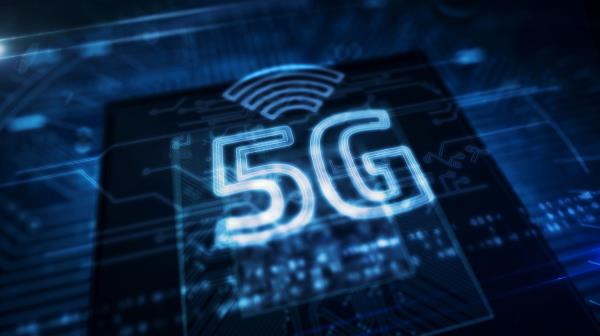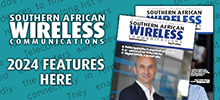04 April 2024

Chantel Cary, director product marketing, Oracle
Five years on from the first commercial launch of 5G, the network has not exactly lived up to early expectations and the industry has collectively struggled to identify viable use cases and monetisation strategies, particularly for the consumer market. This may be especially disconcerting for those communications service providers (CSPs) who have yet to roll out the network.
According to GSMA Intelligence, only 27 operators across 16 markets in Africa have launched 5G as of September 2023, representing less than 5% of mobile network connections. Despite the general disillusionment with where the industry stands with monetising 5G, there are still some valuable lessons that we’ve learned along the way and that service providers should consider as they plan their deployments.
Many digital transformation and 5G monetisation programs are closely linked
While some may argue that 5G has been overhyped, I would argue that it’s because the industry is intent on getting things right this time around. The world and market dynamics have drastically shifted since the rollout of 4G, and service providers are intent on learning from missed opportunities of the past. As such, we’ve seen over the better part of the last decade the industry entrench itself in a massive digital transformation effort. CSPs are sweating assets, consolidating IT, streamlining operations, and embracing new ways of working in a herculean effort to be more agile and better equipped to thrive in this digital era.

The ability to ‘move fast’ and adapt quickly is particularly important in the context of monetising 5G. Without a clear use case to drive the 5G monetisation strategy, CSPs must be prepared to try many different things (use cases, pricing strategies, business models, etc.) to see what works best for the customers in their market. This is where we often find that digital transformation and 5G monetisation efforts converge. At Oracle, we are often called upon to help our customers balance these two priorities – improving operations and the customer experience today with solutions and capabilities robust enough to support the monetisation strategies of tomorrow. We have also found that many service providers are undertaking substantial digital transformation programs that include consolidating and modernising IT systems like product catalogs, billing, and customer relationship management systems while simultaneously exploring new 5G use cases and business models. Ultimately, these providers want to ensure that their IT investments can support their future monetisation strategies.
Success looks a bit different than expected
There are high expectations for 5G, including anticipations of the network spurring the next industrial revolution. While these are still very much a possibility, the slow pace at which 5G innovations have progressed thus far has caused the industry to become somewhat disenchanted. Be that as it may, there are still some successes achieved with 5G that we can tout, though they may be different than originally anticipated.
Foremost, I would be remiss if I did not mention the success of one of the early-identified use cases for 5G – fixed wireless access (FWA). To date, there have been more than 80 global deployments of 5G FWA, with the number expected to grow significantly in 2024. The technology’s low barrier to adoption (i.e., no wires, availability wherever 5G mobile coverage is available) and its ability to drive usage of data-intensive services like online gaming and streaming back onto the network are just some reasons to be excited.
“FWA is not the only 5G success. As we continue to see more 5G deployments around the world, new pricing trends and monetisation strategies emerge.”
Service providers that have rolled out FWA are also starting to see its impact on key performance indicators. Early adopter T-Mobile reported 4.2 million 5G FWA subscribers at the end of Q3 2023, with an average revenue per account (ARPA) of $139.83, a 1.70% increase year-on-year. Additionally, in regions like North America and the Middle East, where 5G FWA is widely available, service revenue growth is outpacing subscription growth, offering a beacon of hope to service providers in markets where FWA has not yet been deployed.
Quality over quantity
FWA is not the only 5G success. As we continue to see more 5G deployments around the world, new pricing trends and monetisation strategies emerge. A recent study by Juniper Research, 5G Red Cap, and 5G Advanced anticipate that CSP-billed 5G revenue will increase by 32% in 2024 to nearly $400 billion. This is expected in part due to shifting 5G pricing and monetisation strategies. Today, a significant proportion of the CSPs that offer 5G do so at either no additional charge or price based on data tiers. This trend seems to be changing quickly as CSPs seek to differentiate their offerings with 5G-rich app bundles and speed tiers. Verizon myPlan, for instance, combines 5G data plans with several 5G-rich apps. Customers can choose from pre-defined plans tailored toward customer interests, such as plans for sports fans or video streaming enthusiasts. Alternatively, customers can build a bundle of their choice by selecting a 5G data plan and their apps of choice.
“There are high expectations for 5G, including anticipations of the network spurring the next industrial revolution. While these are still very much a possibility, the slow pace at which 5G innovations have progressed thus far has caused the industry to become somewhat disenchanted.”
Beyond bundles, a growing number of CSPs are now introducing pricing based on 5G speed tiers. Telenor Norway takes a hybrid approach to 5G pricing, offering data plans that are priced based on data and speed tiers. Telenor’s customers can select between data plans that offer 5G speeds of 1,000Mbps or 200Mbps. Based on these trends, we expect pricing strategies to continue to evolve.
In Asia, service providers are differentiating themselves with plans that include a guaranteed network experience or quality of service (QoS) for specific customer segments. Three Hong Kong (3HK), for example, offers two 5G Signature Plans. The 5G Live Connect plan is geared towards content creators and includes unlimited 5G streaming with a prioritised network experience to ensure high-quality live streaming. The 5G Stock Pro plan is geared towards day traders and includes a guaranteed QoS with two times the network resources allocated to users, enabling real-time streaming of stock quotes. The plan also includes advanced analytics tools, real-time news and market commentary, and a personal investment portfolio.
African CSPs would do well to observe how others across the globe are differentiating their 5G offerings to enhance monetisation.
Innovation is still to come – will you be prepared?
Throughout Oracle’s many conversations and engagements with service providers on the topic of 5G, the biggest lesson that we have learned thus far is that there is much more innovation still on the horizon, and CSPs must be prepared to capitalise on these emerging opportunities. The delay in the rollout of 5G standalone (SA) is to blame for the dearth of compelling 5G use cases the industry has been awaiting. As 5G SA deployments pick up in the next few years, we can anticipate the pace of innovation to accelerate with it. In the coming years, we can look forward to revolutionising use cases like the metaverse disrupting our lives and the way we work. We foresee telecoms service providers becoming industry service providers with 5G fueling monumental transformations across industries.

Moreover, we anticipate that the network, supported by operations and business support systems (OSS/BSS), becoming a platform for innovation. Industry initiatives such as GSMA Open Gateway and CAMARA APIs will play a key role in standardising this platform approach, making it easier for external parties to develop on top of the network. To this end, by opening up the network to external developers, co-innovation, and the support of B2B2X business models will create new revenue opportunities for CSPs. When coupled with new features of 5G SA, such as the ability to configure, monitor, (via the NWDAF) and charge for a guaranteed quality of experience (QoE), service providers can create compelling offers that drive incremental revenue growth.
Who knows what the future has in store for the industry – could we have foreseen the app revolution and subsequent digital economy sparked by 4G? What else does 5G have in store for us? Regardless of what the future holds, ensure your organisation is prepared to rise to the occasion by investing in IT, network, and cloud capabilities that will support a variety of business models, pricing, and monetisation strategies with the agility to adapt and scale services seamlessly on demand.







